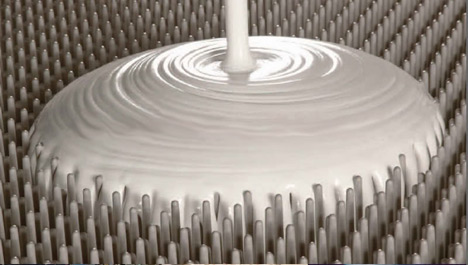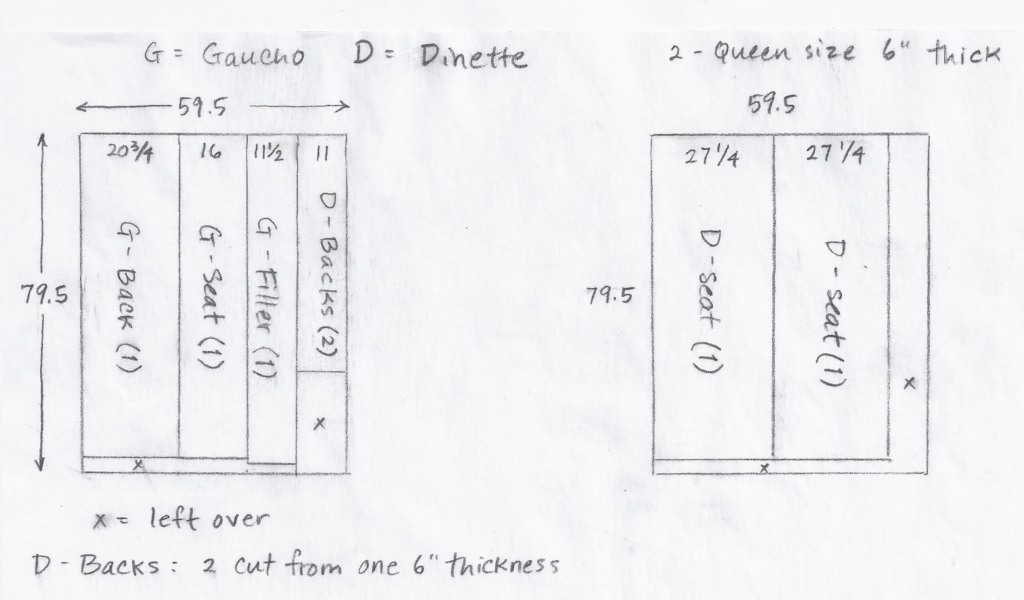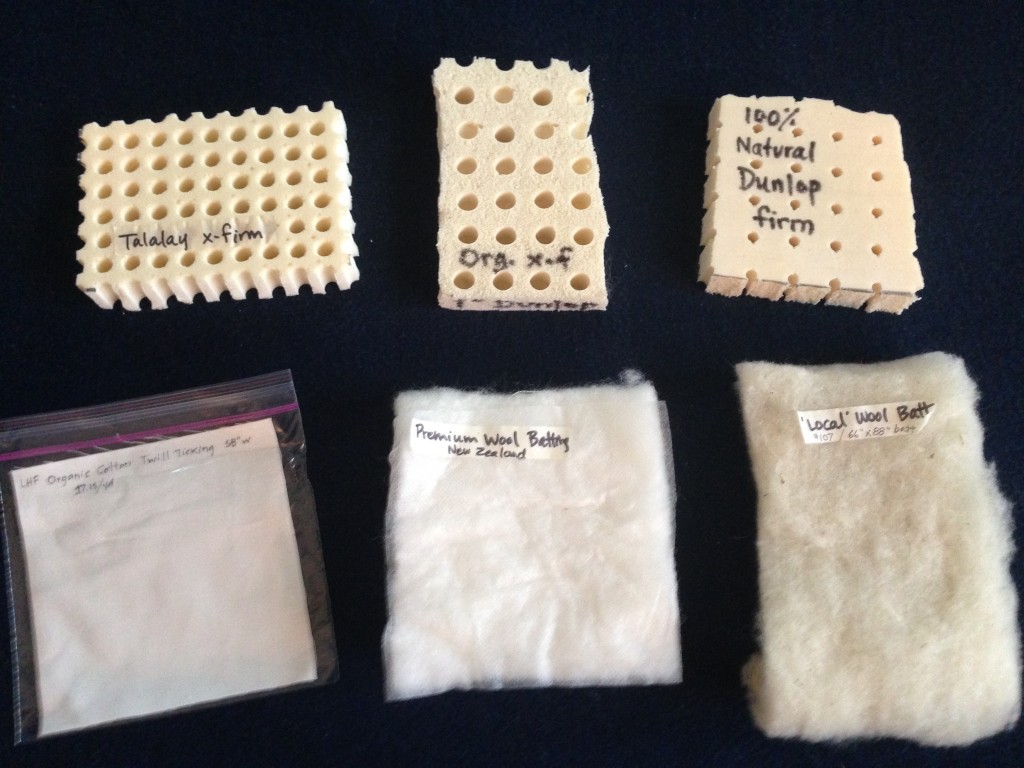Once I’d found fabric and an upholsterer to make the new cushions for my vintage Airstream, I needed to place an order for the cushion filling. The original cushions had been stuffed with polyurethane foam, which was still a relatively new material in 1969, the year my trailer was manufactured.

Polyurethane foam was (and is) inexpensive to produce. When it hit the market in the late ’50’s, it quickly usurped its all-natural predecessors which were popularly used to fill cushions and mattresses up to that time: latex, feathers, excelsior [slender wood shavings], cotton batting, horsehair and wool. To give a sense of how imposing the market for this product has become, consider the following (from Wikipedia):
“Currently, polyurethane-based foams make up over 90%, by weight, of the entire market for polyurethanes. The largest amount of polyurethane is used by these industries: construction, transportation, home furniture, noise and vibration reduction, and carpet. Construction uses 27% of polyurethane, and transportation uses 21%. Flexible foam is the leading material usage at 44% total volume, and rigid foam material at 28% of the United States market.”
The problem from a sustainability & green building perspective is that polyurethane foam is made with questionable chemicals and processes, is highly flammable, and there are very few options for recycling. In fabricating new cushions for my Airstream, my most important considerations were that the materials should be eco-friendly, relatively economical, and comfortable. I had some choices to make: Should I use latex? Down or feathers? Wool or cotton? Or a combination? Where would I source them from? How comfortable are these products when you sit or lie down on them? Where would I need to compromise? I needed to learn a thing or two about how cushions are constructed, too.
I started with some online research and thought that, although options like down and feathers are available, the best place to start was probably to look at foam options, since that’s what I was replacing. I seemed to run out of options for sourcing latex foam locally in North Carolina (where my upholsterer is based), so I cast my net a little wider, and soon discovered Carla Pyle of Montana-based New Leaf Natural Upholstery. I read through a few of her blog posts to learn a little bit about how cushions are made, and gave her a call to start weighing my options and consider costs.

Carla was patient and thorough in answering all of my beginner’s questions, and as a follow-up, I e-mailed her some photos and measurements of the cushions we’d be replacing. After getting some additional input from my upholsterer, we came up with an idea for foam “pillows” that could be removed if and when it became necessary to wash or replace the finish fabric. To do this, Carla suggested that the 6″ latex core would be cut to size and wrapped in wool batting (padding), which protects the latex from UV rays and is also a fire-retardant material. The cotton ticking (cover material) is sewn around everything to complete the pillow. Meanwhile, the finish fabric would have been sewn into the proper shape, and the pillow then goes inside.
So, the last thing I needed to do was pick out which specific materials I wanted based on availability, quality and price. Carla e-mailed me an article about latex foam and a few pricing models to consider, and then sent some material samples out in the mail so I could get a feel for their characteristics.

Needless to say, I got a case of sticker shock when I received pricing options that ran from $1,700 to over $4,000 for the latex foam! By comparison, the same amount of polyurethane foam is available for anywhere between $650 and $1,550 before shipping. After all, I had only paid $3,400 for the trailer itself!
So I did a little more research on the market price for the same or comparable material, and found that New Leaf’s pricing was competitive. And I rationalized that:
- I need to replace the cushions no matter what with a healthy product, and this seems to be the most straightforward way to get the best result
- I’m supporting “alternative” green products that are healthier, but don’t yet enjoy the economies of scale that their mainstream competitors have, so I have to suck up a higher price
- Seating & bedding are aspects of indoor trailer life that I’ll use & enjoy the most, so I should buy quality, and
- I can save a lot of money if my upholsterer already knows how to work with this raw material and I can drop ship to him directly instead of having New Leaf cut it for us.
I decided to trust Carla completely and move forward, and I was lucky to discover that my upholsterer, Obed, is very comfortable working with this material (one of the many things he does is shape foam to make motorcycle seats). I got the samples in the mail and felt them out, and my ultimate decision was a compromise between comfort and cost. The foam I chose was the densest of the three options and also happened to be the least expensive. Perhaps it wasn’t the most subtle, cushion-y foam, but I prefer a very firm mattress to sleep on and the $400 – $500 price difference from its competitors took it over the top.
I ultimately ordered:
- Two uncut 6” Queen-size Oeko-Tex Certified 100% Natural Latex foam sheets (extra firm)
- 15 yards of New Zealand Premium Wool Batting
- 13 yards Organic Cotton Ticking
…and I’ll track the order to my upholsterer, where we’ll check in on his progress. Excelsior!!!
Next up: Getting Road Ready





Vintage Airstream Restorations sells and restores vintage Airstream trailers for recreational or commercial use. Also provides complete service and maintenance including polishing.